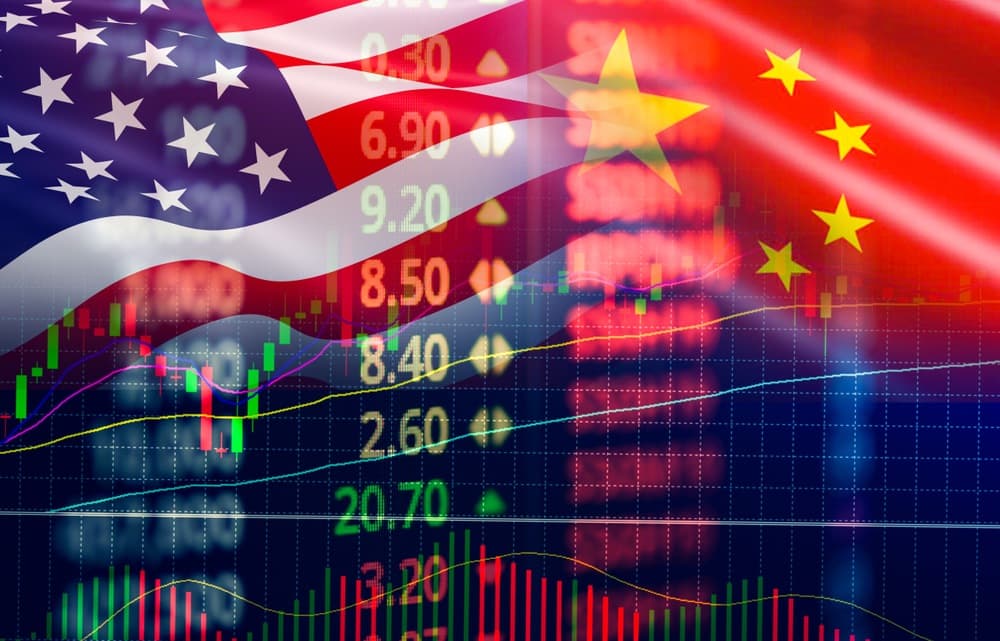
 Markets Surge, Then Stumble
Markets Surge, Then Stumble
Investors briefly lifted the S&P 500 above 6,400 for the first time yesterday after the announcement of the U.S.–EU trade deal.
Hopes for a new wave of transatlantic cooperation — plus a commitment from Brussels to purchase $750 billion in U.S. energy — fueled a short-lived euphoria.
But as attention turned to the coming week’s data dump, the rally stalled.
AI chips still made a showing: Tesla jumped 3.02% after inking a $16.5 billion AI chip deal with Samsung. AMD’s price hikes added fuel, sending Super Micro up 10.24%, ASML up 2.63%, and Nvidia up 1.87%.
Followed by one remarkable crypto standout. CEA Industries (with the clever ticker: VAPE) exploded 548.85% after raising $500 million to pivot from ag tech to crypto — buying up BNB, Binance’s native coin.
 Red Flags and Rumblings from the Fed
Red Flags and Rumblings from the Fed
We’re almost done. 83% of S&P 500 companies reporting their Q2 numbers have topped expectations.
And in any other earnings season, that would be something to write home about.
This year, it didn’t inspire as much. The bar was reset so low after the Liberation Day tariffs that corporate earners barely had to lift their feet to get over it.
Against the earnings backdrop, the Fed begins its two-day meeting. Given Trump’s open desires for lower rates, Jerome Powell and the Fed governors are under political scrutiny as much as they usually are under the watchful eye of Wall Street.
While most big analysts expect no change in rates, one voice is warning markets that the Fed might… raise rates.
Raise rates…what?! Now?! Sacrilege!
“The unemployment rate is low, but the rate of inflation is somewhat elevated,” economist William Silber argues in The Wall Street Journal.
“That suggests, if anything, the target interest rate should be higher to push down inflation.”
Inflation is still running hot — 2.7% in June, up from 2.4% in May — and unemployment ticked down to 4.1%. Despite pressure, the Fed hasn’t budged since December, holding rates steady at 4.25–4.50%.
In a moment of weakness yesterday, Trump offered Powell a kindness:

Despite the president’s social media campaign, Karoline Leavitt, speaking on behalf of the White House, insists Powell’s job is safe. For now.
 Smoke Signals: Margin Mania, Consumer Cracks
Smoke Signals: Margin Mania, Consumer Cracks
The parade of contrary indicators continues…
We’ve been monitoring historic retail investor buying amid record insider selling in recent months.
Now, we’re adding a few more historic markers to the pile.
Margin investing is skyrocketing: In June, margin debt jumped +9.4% to a record $1.01 trillion, the largest monthly increase in history.

That’s a $400 billion surge over the last two years, surpassing even dotcom and Financial Crisis levels. Relative to M2 money supply, margin debt is now the highest since 2018.
Risk appetite is through the roof.
Cracks in the real economy: Housing defaults just hit their highest level since 2011.

Credit card defaults from small lenders are also at record highs.

There are clear signs the consumer — who’s been propping up growth in the real economy — is starting to buckle.
That Trump is turning up the heat on Powell is not an enigma.
The President wants, needs, interest rates cut — not just to juice markets and finance the national debt… but to help everyday households teetering on the edge – not to mention help Uncle Sam refinance a few trillion in debt at lower rates.
 An “End of the World as We Have Known It” Quiz
An “End of the World as We Have Known It” Quiz
Amid the economic stress fractures and market excess, historian Hal Brands offered up a multiple-choice quiz in Bloomberg this morning.
The US-led world order may be heading for collapse via one of three paths:
A) A major military catastrophe.
B) Soaring federal debt that cripples growth.
C) Trump bulldozes through the rules.
*** D) All of the above.
“History tells us there are many ways in which orders unravel,” Brands writes. “A worrying marker of our current moment is that America is courting all of them at once.”
The Pentagon is stretched thin, from Russia in Europe to China and North Korea in Asia. Beijing is hoarding food and fuel while racing to build a nuclear arsenal that could outmatch ours.

Meanwhile, federal debt is now over $37 trillion – 123% of GDP and on track to exceed 200% by 2050 if current spending patterns hold.
And with Trump threatening to replace Powell, re-engineer trade rules, and reframe democratic norms, the political foundations are all lining up for the Trump Great Reset… but the engine is burning hot and whining loud.
 Big Data, Bigger Stakes
Big Data, Bigger Stakes
The mood on Wall Street may feel ebullient, but make no mistake: this week marks a make-or-break stretch. CNBC dubbed it the “Olympics for market watchers.”
Today is a light warm-up. Tomorrow, the main event: The Fed press conference following their rate decision.
Watch UPS earnings before the open. Analysts hope automation will offset the 50% drop in Amazon shipments, but tariffs could weigh on the company.
All of this will shape what the Fed does next — and what they say tomorrow could send markets spinning. Even as some of the big tech names are also scheduled to report earnings after the close on Wednesday and Thursday.
That’s why we’re gathering today, ahead of what may prove to be a chaotic week. Our urgent investor summit at 10 a.m. will connect the dots before Powell does.
~ Addison
P.S. This morning’s investor summit at 10 a.m. will cover the full spectrum of risk and reward heading into the Fed decision. If you’re managing serious capital in uncertain times, you’ll want to be there.
Your thoughts? Please send them here: addison@greyswanfraternity.com



